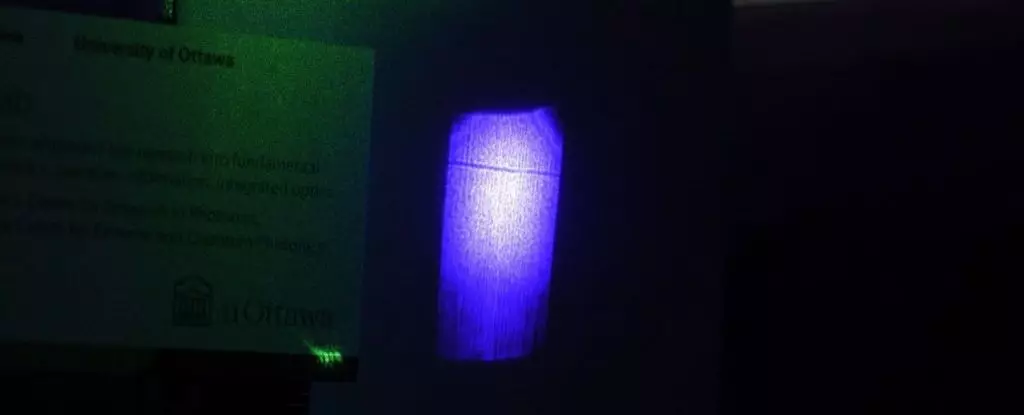Shadows have long been understood as simple consequences of light being obstructed by objects. In a world where light travels freely until it meets something impenetrable, the ensuing darkness is a familiar phenomenon. Yet recent research has unearthed a startling revelation: under specific conditions, beams of laser light can create shadows in ways that defy traditional physics. This finding invites a reassessment of how we perceive shadows and challenges our understanding of light-matter interactions.
Traditionally, shadows are formed as a direct result of opaque objects blocking light. When photons from an illuminating source collide with an obstruction, they cannot pass through, resulting in the darkened area behind the object. This concept, while straightforward, is dependent on the properties of objects in relation to light. Opaqueness is key—the thicker or denser the material, the more pronounced the shadow. However, light does not always yield to these simple rules, particularly in the realm of laser physics.
A groundbreaking study led by physicist Raphael Abrahão at Brookhaven National Laboratory has revealed a tantalizing twist on the notion of shadows. By crossing two laser beams in a transparent medium, researchers observed a phenomenon wherein the primary beam became effectively blocked by the secondary beam. In essence, the interaction of these two streams of light gave rise to a shadow-like effect—a perplexing concept, as photons typically pass through one another without interaction, resembling the behavior of two flashlight beams crossing paths.
This investigation revolved around the concept of non-linear optics, where the interaction between light and certain materials deviates from expected linear patterns. Utilizing materials like ruby, which is known for its non-linear optical properties, Abrahão and his team explored the influential dance of light within such mediums. Their serendipitous journey began as a casual conversation over lunch and morphed into a dedicated scientific inquiry that would evidence a remarkable optical effect.
In their experiment, the researchers directed a blue laser at ruby to validate their hypothesis, illuminating the medium and producing a striking glow when projected onto a screen. Concurrently, a green laser beam was introduced perpendicular to the blue beam. This interaction generated a complex series of reactions within the ruby’s atomic structure, allowing electrons to oscillate in response to the distinct wavelengths. As a consequence of these electronic transitions, the initial flow of the blue light was disrupted, leading to an observable dark line as the green beam transmuted the optical environment.
What transpired was effectively a shadow cast by light interacting within a transparent substance—an evolution of the traditional understanding of shadow mechanics. The researchers were able to confirm that this shadow meets all standard criteria for being classified as such: it is clearly visible, takes on the form of the screen’s surface, and shifts dynamically with the green laser’s movement.
Abrahão’s findings expand our comprehension of how we interact with light and matter. By most conventional standards, shadows are easily defined phenomena, but this discovery ushers in a paradigm shift, illustrating that light can also obstruct itself under specific conditions. It challenges scientists to rethink established tenets in optics and may lead to innovative applications in various fields—from telecommunications to imaging systems.
As we proceed further into an era of increased exploration in photonics and quantum mechanics, the implications of these findings suggest immense potential that integrates enhanced control over light and the materials we utilize. Abrahão summarizes this vision succinctly: by evolving our understanding of shadows alongside our grasp of light interactions, we may soon harness these principles in transformative ways, redefining the very essence of illumination in our universe.
The journey from a casual lunchtime discussion to a profound scientific discovery encapsulates the beauty of curiosity-driven research, reminding us that even the simplest questions can lead to the most remarkable revelations. Shadows are not merely absences of light; they are pivotal elements in the ongoing exploration of optics and the universe at large.


Leave a Reply